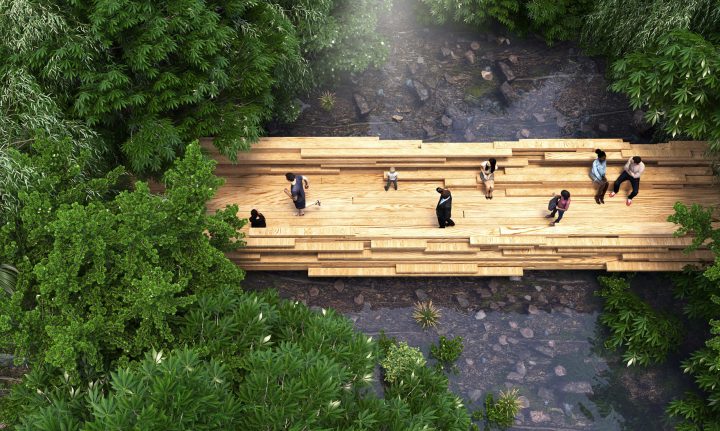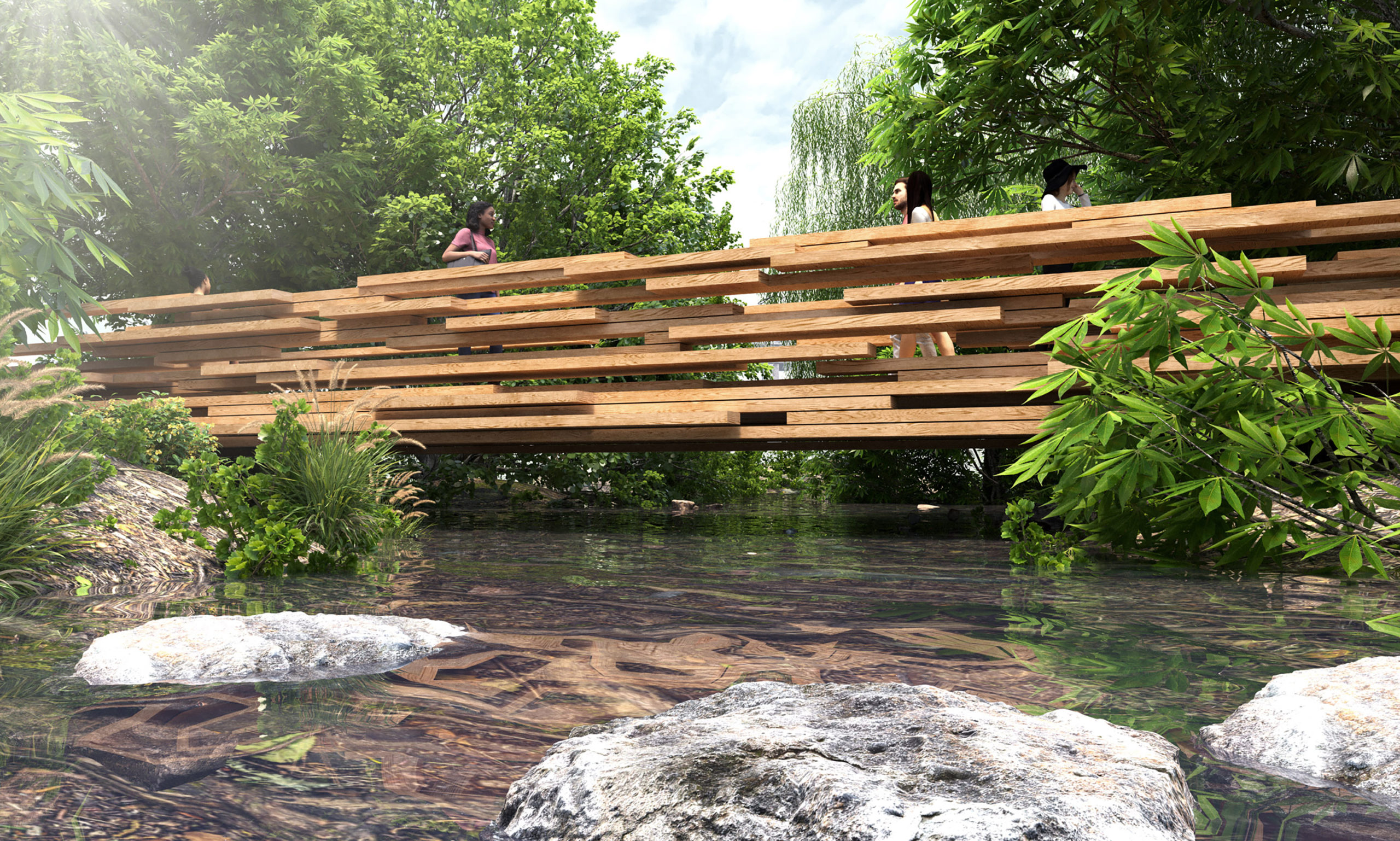A bridge too far
A ‘gift’ of an eco-friendly bridge over the Liesbeek River causes a rift

Organisations involved in conserving the Liesbeek River in Cape Town are crying foul over plans by Design Indaba to build a cross-laminated timber bridge. Though they are not against the project in principle, they are unhappy with the bridge’s proposed location.
Plans to build a bridge over Cape Town’s Liesbeek River have sparked tensions between environmental organisations and Design Indaba founder Ravi Naidoo.
The Friends of the Liesbeek (the Friends), which has helped to promote and protect the river for close to 30 years, was “surprised” to read this section of a recent Daily Maverick article about Naidoo:
“…. the bridge is also a gesture of gratitude to the Friends of Liesbeek River, a civic organisation that helps to keep the river clean. ‘I thought, maybe a good gesture from us at Design Indaba would be to build a bridge for the fabulous folks who maintain this river,’” he said
This, they say, is far from the truth.
“It’s no gift to us,” said Nicholas Fordyce, the communications and press committee liaison for the organisation. “In fact, a true gift would be to actively engage with the community and hear what the community is saying.”
The proposed location for the bridge is the Upper Liesbeek River garden in upmarket Bishopscourt. But the local community doesn’t want the bridge there – they want it on a different part of the river.
The garden, established in 2004 by ratepayers and volunteer organisations as a recreational space, is a popular location for children’s parties.
Phil McLean, chairman of Friends of the Liesbeek, said the garden already has a series of large stone steps across the river which are ideal for “close contact recreation”, for instance, children catching frogs.
“That’s the atmosphere and the vibe that’s being created there. And he [Naidoo] hasn’t listened to them and internalised that,” said Fordyce.
Suggestions were made to Naidoo and his team to build the bridge in Observatory, lower down the river, explained Fordyce.
“There’s a much bigger open space,” he said, adding that the area, near an offramp to the N2, lacks a pedestrian bridge.
McLean says the bridge would allow communities to cross the river safely.
It is also a potential site for a ParkRun. “There’s an existing ParkRun around the Rondebosch Common,” said Fordyce. The number of people participating in the ParkRun has grown significantly, making it a potential health hazard.
“What’s missing is that link to create a circuit… a pedestrian bridge down there would enable that.”
McLean adds: “The lower reaches forms part of the Two Rivers Urban Park and is a popular place for (among other activities) birdwatching and dog-walking.
“But apart from the road bridge outside the entrance to the South African Astronomical Observatory, there is no safe place to cross the river again, going all the way back to the N2.”
They feel their suggestions have fallen on deaf ears. The organisation says engagements with Naidoo and Design Indaba took place only after they’d found out about the bridge through the media.
One engagement involved a site visit which Fordyce says was meant to take place in both the upper and lower reaches of the river. “It felt like it was an insincere attempt to consider the alternative site because we just didn’t go to it.”
In response to queries about the alternative site, Naidoo said a bridge in Observatory would need to be five times bigger and would cost 10 times as much.
“A crossing at this position would require a much more substantial structure that is outside the scope and budget of this pro-bono project.
“However it was said that this could be considered as a future phase provided suitable funding can be sourced.”
Fordyce said the Friends were ready to collaborate and help “source funding” where necessary.
The eco-friendly bridge is made of cross-laminated timber (CLT) sourced from eucalyptus wood – an invasive plant species. The project, planned in collaboration with British designer Paul Cocksedge, was inspired by Cape Town’s brush with Day Zero during the 2018 drought.
Naidoo previously told Daily Maverick that the idea for the bridge was sparked by a scientific study which found that alien vegetation was sucking up a dam’s worth of water each year.
CLT is an environmentally friendly alternative to concrete or steel, and is revolutionising the construction industry.
The components of the bridge will be built off-site and transported to the river, where they will be assembled like building blocks.
The initial deadline for the project was 27 September, World Rivers Day.
Naidoo says the project predates the Friends of the Liesbeek River’s involvement by over a year.
In a brief response, Joan Parker, coordinator of the Upper Liesbeek River garden, said part of her organisation’s concerns were whether the relevant permissions from the City, province and national government had been obtained.
Naidoo said the project was still in the pre-council submission stage.
City of Cape Town Mayco member for water and waste, Xanthea Limberg, confirmed that “various City departments were approached for guidance on the approval process for a project of this nature… however, no application has yet been received.
“In addition, the City advised that the Western Cape government’s department of environmental affairs and development planning and the national department of water and sanitation should provide guidance, as the proposal would also need to be considered in terms of national and provincial legislation.
“Approval of this project should be preceded by a public participation process where local stakeholders such as Friends of the Liesbeek will be able to have their say,” said Limberg.
Though Fordyce appreciates the planning that has already been done to build the bridge in the upper part of the river, he feels it highlights the “incorrect process” that Design Indaba followed.
“You don’t predetermine the site and the design and then put it to the public. It should be the other way.
“The reality is that he’s picked a site, and the reason he’s picked the site is because… it’s the most manicured part. He’s piggybacking on the work of those who’ve worked for decades in that spot, without any kind of reimbursement for it.
“That’s no reason not to necessarily put a bridge there, but he’s not listening to the people who put years of their life into that space, and they are saying they don’t want a bridge,” said Fordyce. DM



















 Become an Insider
Become an Insider
Comments - Please login in order to comment.